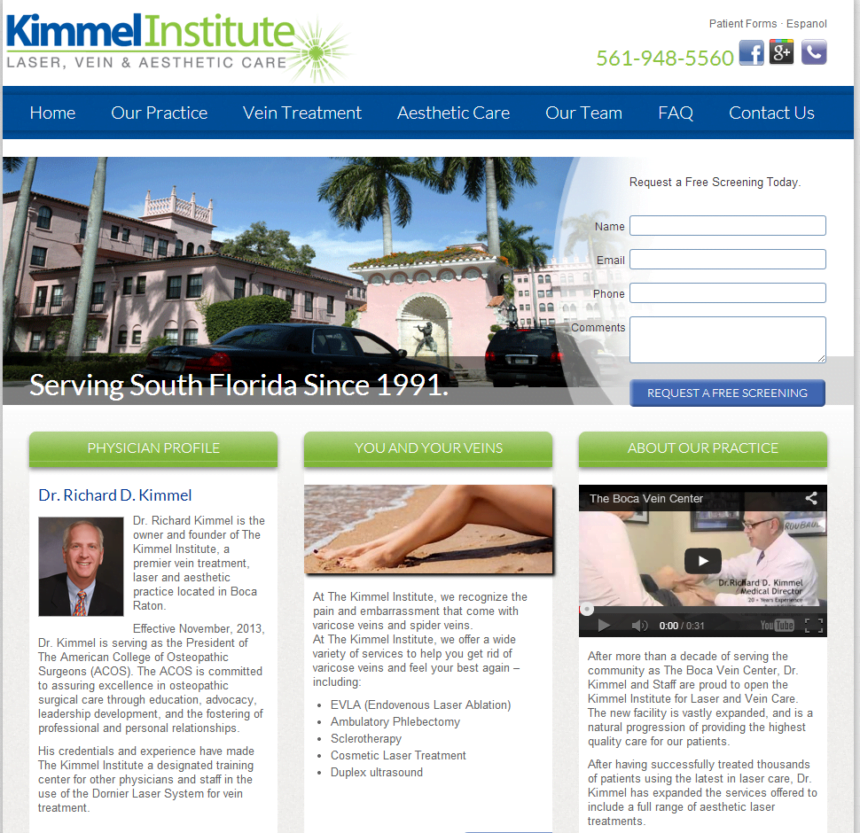Your website provides an excellent opportunity to introduce your medical practice to a wider audience than almost any other advertising means. However, it is your website’s calls-to-action that help to turn your casual website viewers (translate: potential patients) into actual patients for your practice with even more regularity. Incorporate these must-have calls-to-actions into your online face so you can see more and more new patients in person and face-to-face.
Your website provides an excellent opportunity to introduce your medical practice to a wider audience than almost any other advertising means. However, it is your website’s calls-to-action that help to turn your casual website viewers (translate: potential patients) into actual patients for your practice with even more regularity. Incorporate these must-have calls-to-actions into your online face so you can see more and more new patients in person and face-to-face.
1) Form Submissions
Without form submission boxes, you greatly reduce the odds of turning one-time visitors into long-term patients for your practice.
While the aged old “submit” button can still serve its purpose, make it even more worthwhile for a patient to submit her email address by offering free information. Internet consumers are becoming increasingly savvy regarding the ways of the web and many have a “what’s in it for me?” attitude about giving up their personal information.
Some examples of encouraging form submissions through providing free information in the form of articles, reports, guides, or ebooks (along with their specialty medical practice) are:
Allergy Reports by Season ( for an Ear, Nose & Throat or Family Practice)
The Ins and Outs of Gingivitis (for a Dental Practice)
Common Skin Conditions (for a Dermatology Practice)
Guide to Preventing Varicose Veins (for a Vein/Vascular Clinic)
… or something that’s relevant to your medical practice and the people interested in the services you have to offer.
“Get your free report now!” sounds much better than “Submit” after all.
2) Call Now / Schedule Your Appointment Now
The “Call Now” button is great, especially in the day of mobile marketing. With so many people relying on mobile phones to access the Internet, it makes perfect sense. To get more mileage from your efforts, though, consider a “Schedule Your Appointment Now” button instead.
This give users the option of calling or filling out an Internet form to book an appointment at that very moment. After all, many people research medical information, treatments, practices, etc. after normal operating hours when no one is in the office to answer the call.
3) Social Sharing Icons
According to Social Media Examiner, more than 80 percent of Americans use a social network. There are at least three vital reasons for small businesses, such as medical practices, dental firms, and plastic surgery clinics to leverage social media:
1) To connect with patients.
2) To increase visibility (branding your practice).
3) To self-promote your practice.
Social sharing icons, like Facebook, Twitter, Pinterest, LinkedIn, and Instagram, make it easier to encourage existing or prospective patients to follow your social media activities or to share information on your site they feel their friends or family will find beneficial. In the end, this can provide even more exposure (much of which is local exposure) for your practice.
4) Promotion/Event Call-to-Action
Drive registration and/or ticket purchases for your next event, seminar, charity sponsorship, health fair, etc. by including an event/promotion-specific call-to-action on your website.
Keep it simple, along the lines of, “Register for our 2014 Gastric Bypass Informational Seminar”, for example.
5) Learn More/Download Button
Though we touched on this in the first must have calls-to-action Form Submissions, it’s worth extending its usefulness. The Download or Learn More button is essential for any practice that specializes in a certain condition or offers specialty medical services. It helps establish you and your medical practice as an expert when you offer a downloadable guide/ebook or offer an educational series. This type of call-to-action is especially beneficial for increasing engagement and establishing yourself as a leader in your healthcare field, while also collecting email address for your email marketing campaigns.
Some examples of ebooks or guides along with their respective medical speciality practice are:
Say Farewell to Spider Veins and Varicose Veins (for a Vein/Vascular Surgery Clinic)
Guide to Botulinum Toxin (Botox) Procedures (for a Dermatology Clinic)
Mastering Dental Hygiene to Prevent Periodontal Disease (for a Dental Practice)
Keep in mind that you don’t want to give your prospective patients an opportunity to become confused and leave without taking action. Therefore, the key to successful calls-to-action is to make them specific, clear, and brief — and of course highly visible, desirable, and engaging.

